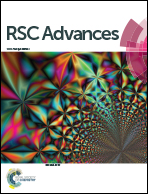Quenching induced fracture behaviors of CVD-grown polycrystalline molybdenum disulfide films
Abstract
The fracture behavior of two-dimensional polycrystalline molybdenum disulfide (MoS2) films is essential to device performance and has attracted tremendous attention in recent years. Here, we investigate the mixed intergranular and transgranular fracture behaviors of CVD-grown polycrystalline MoS2 atomic layers using multiple techniques. The underlying mechanism is proposed to be that micro-cracks initially nucleate at grain boundary junctions and propagate along with the grain boundaries, resulting in intergranular fracture behavior. On the other hand, as-existed sulfur vacancies serve as crack nuclei and propagate along energy preference directions through Mo–S bond breaking, resulting in transgranular fracture behavior. Lattice shrinking induced compressive, rather than tensile strain is residual in fractured MoS2 microflakes, which enlarges the corresponding bandgap by ∼200 meV. Our work deepens the understanding of the fracture behaviors of polycrystalline MoS2 atomic layers and demonstrates a promising method to engineer the strain in MoS2-like atomically-thin materials to further tune their physical properties.


 Please wait while we load your content...
Please wait while we load your content...